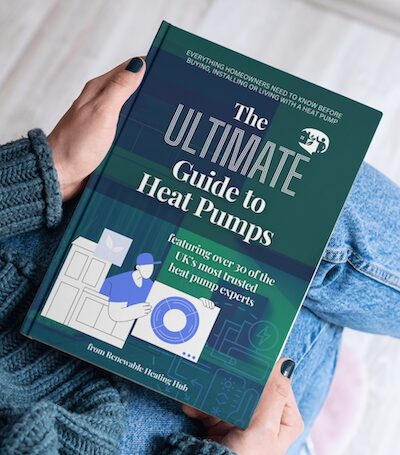Yes, it would be good to have a branch in Estonia!😉 Regards, Toodles.
Toodles, heats his home with cold draughts and cooks food with magnets.
Posted by: @chris12I am living in Estonia so before I start picking peoples brains I should ask if location matters?
We may not know the regulations which apply to installation of energy-based equipment in Estonia,
but I'm confident that the same laws of physics apply.
I believe that Estonia mainly generates electricity using fossil-fuels.
We would be particularly interested in helping the country move towards cleaner energy technologies.
Tell us what subject matter you're interested in, and we'll try to help.
Save energy... recycle electrons!
Yes it's a shame Estonia does still reley on fossil fuels but it is decreasing and they have set a target date of 2030 to generate 100% from renewables, I am guessing that will include wood based and bio fuels. I believe a big difference here that as far I am am aware does not happen in the UK is district heating, this involves piping hot water to apartment buildings for heating. I have just moved to a house with a ground soucre heat pump these are quite popular here although I do see some air source heat pumps about. As soon as I was able I added solar panels and battery storage which only came online in the middle of July so have missed out on some solar production this year.
Nibe F1245-8 R ground source heat pump with underfloor heating approx 244m2
Solax T-BAT 18.4 kWh, 6kW Inverter, PV Capacity: 15.58kWp
Save VTR 300B Ventilation System
@chris12 Let us hope that next year will be a bumper solar crop for you. We seem to have thick clouds that have taken up residence now but we had a very productive summer - best in the three years we have had our solar panels. Regards, Toodles. (South East England)
Toodles, heats his home with cold draughts and cooks food with magnets.
There are few heat-network schemes in UK @chris12 but I agree that they are more common in Eastern Europe.
New ones are being put in when rubbish incinerators are built, for example.
The low-cost heating is compensation for households living close to the site.
There's an innovative scheme being run by Kensa Heat Pumps called Heat the Streets.
For new housing developments, Kensa puts in the ground-loops at no cost to the developer.
The householder rents the heat-exchanger in their home for £25 per month, and Kensa maintains the entire system.
It's maintenance issues which have created problems for householders in other developments with district heating.
If/when the central heat-source fails, they have no backup to use.
Too often, the home-owners then discover that their contract doesn't cover major repairs, and they are asked to pay large sums of money.
It can take many weeks for households to find that money, during which time no one on the estate has heating or hot water.
It is inevitable that these stories have turned people away from heat networks.
In Oct'23 responsibility for all electricity, gas and heat networks was passed to the new National Energy Systems Operator (NESO).
They have the remit to meet Net Zero by 2050, and will be starting new energy strategies.
Save energy... recycle electrons!
Hello everyone
I'm Sarah, living in a suburb of Norwich. I have a 4-bed, 3-bath house and share with two/three others. I had A2A multisplit aircon put in 18 months ago, after hot summer days have become unbearable in the south facing rooms. Absolutely love it!
I'm now trying to decide what to do about hot water, as I will have another multisplit put in next year for the rest of the house. Probably Mitsubishi, same as the first one, which has been absolutely trouble free. I really want a solution that doesn't need much in the way of time or attention, as I am far too lazy to fiddle about trying to save a couple of quid.
Basically, this is what I said on MSE:
I had aircon* put into half the house a couple of years ago, after nearly boiling in the summer.
It has been brilliant, both summer and winter. So I'm now looking at another unit for the rest of the house, which leaves me in HOT WATER!!
I've seen the videos from Heat Geek, but they really don't offer much detailed info unless you shell out for a consultation. Also had a quote for a system from Energie** and waiting for another local biz to come and suggest their offering.
The Heat Geek sounds great, but the lack of detailed info and some reviews raise concerns. Has anyone here had their kit for more than a year or so and can comment?
The Energie solution looks beautiful but seems very expensive for what it is. Plus it is recommended to be installed on a south facing wall, whereas I need an install on a north facing wall (where I already have the HP). Any comments on this one?
* Mutsubishi multisplit + 3 room units
** Energie ECO: energie.co.uk/products/eco/
Yep, its the panel that will need to be fitted on a north wall. That's the side of the house where all the plumbing lives. Aircon engineer who fitted the A2A was perfectly happy with that location, and there have certainly been no problems.
I currently have a gas combi boiler, so no HW tank. As far as I can tell, I will need a tank, come what may, which will need to feed 3 shower rooms + basins/sink.
Have just now been looking at what seems to be called heat batteries (eg Sunamp Thermino), which may be a better solution. No info on costs yet, but the sizes of the heat units are quite small, so should fit in a kitchen cupboard okay. Also removes the legionnaire's and venting issues. Seems fairly similar to the Heat Geek idea.
Glad to hear that about your friend, Ned.3 people, 3 shower rooms. One currently has an electric shower. We don't shower at the same time, so I thinkrecovery time won't really be an issue. Space is definitely an issue, because what was the airing cupboard has been converted into a wardrobe. I was thinking to use the space in the kitchen where the gas boiler is currently. I had heard of the Mixergy, but I don't feel too enthusiastic about an all in one solution - some companies are good at tanks, others at heat pumps, but I suspect few are good at both.Upfront cost is a consideration; running costs less so, really. I'm with Octopus, so it may help to move from their standard tariff. I did have a conversation with them about a PV+HP solution, but they said my roof is not suitable for PV.
Wow - a remarkable range of prices for what seem very similar systems! Thank you, Qriz, tacpot. Fun fact: I had one of the very first gas combis from Vaillant, installed in 1984. It was great and worked perfectly, though I have heard that Vaillant have had their problems more recently.matelodave, I did do a Greenmatch form and got referrals from 2 national and 1 local business (who wants to sell me the Energie system). I will prefer a local supplier/installer to hopefully get better aftercare.
NedS, do you think your friends would be prepared to discuss their Sunamp install? I would be very interested in talking to them.
I'm going to start looking through older posts to garner useful info, but any immediate suggestions will be welcomed!
Hi All, I'm Steve and I have been hanging out on the forums for a while; its been a great resource.
I have been into renewables and energy transition for a long time, getting my own solar panels back in 2014, they have been fantastic and have opened my eyes to a world of efficiency and renewables.
I recently got my own heat pump installed, and we are literally at the end of the first month, and so far its working really nicely.
My career has been in Supply Chain and Procurement, but Im at a bit of a crossroads in my life, and after considering what I wanted to do for the rest of my working days, I have decided thats the energy transition is so important, that I want to be a part of it. As such I have just completed Elmhurst Energy's Heat Loss Assessor training and am just in the process of registering for their competency scheme.
If anyone can help me make contacts with installers who might need Heat Losss Surveys completed in London/Essex, I would be happy to be introduced as either freelance, contract or full time.
Thanks @editor for setting up this forum, and for your energy in getting the word out about the good and the not so good. Im hoping to be part of the vanguard of the future good.
Best regards, Steve.
Posted by: @scalextrixAs such I have just completed Elmhurst Energy's Heat Loss Assessor training and am just in the process of registering for their competency scheme.
Hi Steve thanks for joining and posting and welcome to the fascinating world of renewables and heating.
In many ways the bit of the puzzle you have chosen to do is the most important, because everything downstream depends directly on the heat loss. Sadly you will, from time to time, see me (and others) saying that Heat Loss surveys are a very bad case of GIGO (garbage in, garbage out) and one of my co-moderators, @cathoderay, calling them what-iffery.
Its evident from my own experience and multiple posts on this forum that they are far too often wrong to an extent that is wholly unsatisfactory. The principal problems appear to be
1. Getting fabric elements wrong. Quite frequently surveyors ignore fabric upgrades which they cant see (eg internal wall insulation) or use the worst possible U value for a particular element (eg double glazing) because they cant be bothered or dont want to take the risk of finding out the truth. There also some fabric elements (eg Stone walls) where the commonly used U values are, by repute, much higher than actual.
2. Double counting. Some software/spreadsheets that are used count room to room losses, but not room to room gains. This is fine for rad sizing, but wrong for system sizing where either both (since the sum is obviously zero) or neither should be counted.
3. Air changes. The default value for air changes (2-3) appears to be very conservative and there is at least circumstantial evidence (with some confirmation by actual measurements) that 0.5-1 is more realistic.
Together these errors can make a monumental difference to the customer, particularly with properties the actual loss of which is greater than about 4kW.
My own house is a good example; there are others very similar reported here. Two professional surveyors each separately spent 3 hours in my house making measurements etc, and whilst they were there I made a point of telling them about various fabric upgrades. Both assessed the loss as 16kW. I asked the surveyor I had paid (the other was free presumably paid for by the prospective installer) for the calculations. They had made mistakes 1 and 2 above. I can only presume that the other surveyor had done similarly. Correcting for these (by doing my own calculation) gave a figure of 10.5kW. At this point I was still using the MCS default ACH values.
I then started to look at my gas consumption. As I had 2 years worth of half hourly meter readings I plotted daily consumption against daily degree days, and also did various other things. This gave a measured heat loss of 7kW, less than half the 'surveyed' figure. After a bit more work to convince myself the figure was correct, I found installers who were prepared to take this on board and fit a 7kW Vaillant (which is capable of 8.6 kW under the design conditions, but only about 7kW once you take into account defrost). The match of the heat pump to the house is near perfect and subsequent measurements confirm 7kW is a pretty accurate figure
Had I allowed installers to proceed on the basis of the professional surveys I would have ended up with a massively oversized unit (or worse still a cascade) and the need to remove floorboards and dig up solid flooring to upgrade pipework The massively oversized unit, apart from being visually unnecessarily bulky and expensive, would have been seriously inefficient, because it would have been cycling incessantly. Unfortunately there are multiple reports here and elsewhere of people who have not been so lucky/determined, and have been saddled with a unit twice the required capacity.
There, at least in my analysis, is a simple sense check which can, and in my view should, be done where its possible to obtain annual heating fuel use (and provided that the house is reasonably heated, - its not necessary that it is heated throughout or continuously). This is to take the annual heating fuel consumption in kWh and divide by 3000. Separately take the annual fuel consumption in kWh and divide by 2000. This gives you two figures, the first a pretty sound estimate for the lower limit on loss (in kW), and the second a pretty generous upper limit. If the surveyed results differ significantly from these and the difference drives significant design divergence (as it will do if the assessed loss in >5kW), then IMHO it should be mandatory to investigate and reconcile.
In my case the annual gas consumption was 18-20MWh, so a lower limit on loss is 6kW and the upper limit 10kW. This immediately shows that the surveys were quite seriously suspect, as more accurate measurements proved.
The problem is that the heat loss survey, by overestimating loss, protects installers from callouts for 'house cold'. It doesn't protect householders from excessive upgrade costs, unnecessary disruption or unnecessarily high electricity bills. That doesn't invalidate the survey, but it should invalidate its use without sense checking and, if necessary, action to reconcile any material discrepancy found. The very best installers understand enough to do the right thing in most cases, the rest don't and are contributing to the poor reputation that the industry currently has.
I hope, as a newcomer, you can become part of the solution not part of the problem!
4kW peak of solar PV since 2011; EV and a 1930s house which has been partially renovated to improve its efficiency. 7kW Vaillant heat pump.
@jamespa I can relate to your experience somewhat, though not so extreme with my own home.
In my own planning for a heat pump, I got a weather station so I could get real data on gas usage for cold days, and I ultimately supplied that to my installer, we were in-between two models output so went to slightly oversized rather than slightly undersized. We did that because in our case we don't want standard room temperatures, the Mrs needs it to be tropical indoors, even when it's sub-zero outdoors.
Let me just say I understand the standard method, and it makes sense why it is the way it is. Of course there are far more accurate methods for measuring heat loss through fabric and ventilation than a basic survey, but they will inevitably cost more money to do; the availability of these was covered in my training.
Posted by: @scalextrixLet me just say I understand the standard method, and it makes sense why it is the way it is
I think this is where we may differ. Nothing makes sense from the point of view of a customer if it regularly produces garbage results that drive wrong design decisions, which the standard method used alone clearly does as numerous reports here show. The physics of the standard method (which I too understand) is sound, the problem is with the data inputted.
I completely grant that the standard method used alone makes sense from the pov of an installer, but that's just not good enough.
Posted by: @scalextrixOf course there are far more accurate methods for measuring heat loss through fabric and ventilation than a basic survey, but they will inevitably cost more money to do; the availability of these was covered in my training
Doing a sense check costs next to nothing. If it reveals a material uncertainty in what the design should be then is it really sensible or even ethical to proceed anyway without informing the customer of the possible consequences?
4kW peak of solar PV since 2011; EV and a 1930s house which has been partially renovated to improve its efficiency. 7kW Vaillant heat pump.
@jamespa it's a question of the right tool for the right job.
Bog standard house (for it's era) with a few well documented changes = the standard heat loss measurement should be fine. The Elmhurst training does talk about alternatives for more complex scenarios.
Throughout my career I have followed a concept of "value the outliers", and while it's much too early for me to start making pronouncements on this latest shift in my working life, I'd like to think I would carry that forward.
Posted by: @scalextrixit's a question of the right tool for the right job.
Bog standard house (for it's era) with a few well documented changes = the standard heat loss measurement should be fine. The Elmhurst training does talk about alternatives for more complex scenarios
Agree with the first bit, not so sure about the second given the uncertainty over ach in particular but also fabric. I'm not sure how many houses can be expected to have their changes 'well documented'; people move after all and a 30-90 year old house may well have had multiple changes that are undocumented and indeed unknown to current occupants. It's good to hear that the training talks about alternatives though, but this doesn't help unless there is a trigger to deploy them.
Currently it seems heat loss surveys are completely unchecked, in the sense that whatever number comes out is assumed to be correct and the whole design is then dictated by that. Yet we know that is not the case in a significant number of instances, and the result is a lot of money spent on installing the wrong system which the hapless customer is then saddled with. This can't be right.
Does the training admit to any of the practical uncertainties and, let's be blunt, failures, or does it teach that the method can be relied on to produce the result that the customer needs. Also what does it say about fabric upgrades that cannot easily be verified (such as most iwi and some ewi or upgrades to double glazing units) or can't be assessed, such as extensions which may have been completed to standards not easily ascertained. Does it suggest being suspicious of the default ach values, and does it make it clear that internal losses should be counted for radiator sizing but not for system sizing? All these clearly matter in practice yet the evidence seems to indicate they are often glossed over.
Please don't misunderstand me, I'm not doubting the value of fabric calculations done well and with accurate input, what I'm doubting is the industry reliance on them, seemingly without questioning their validity, and ignoring obvious sanity checks that could help weed out the cases where design based on survey will result in a poor result for the customer.
Just to give this currency there is another thread running at present where the house loss was assessed at 7.5 kW, by a heat geek surveyor. Based on this the 7kW Vaillant was installed. Cop in current favourable conditions is 3.2 ish when it should exceed 4, because it's cycling badly. It's otherwise a sane install operated correctly. Owner is understandably disappointed.
There are multiple data points indicating unequivocally that the loss is closer to 4kW so the next model heat pump down would have been the right one. Since his fossil consumption was 10MWh/annum the error was easily spotted at survey stage,which could have triggered a deeper look before installing several thousand pounds of the wrong kit.
4kW peak of solar PV since 2011; EV and a 1930s house which has been partially renovated to improve its efficiency. 7kW Vaillant heat pump.
- 26 Forums
- 2,342 Topics
- 53 K Posts
- 362 Online
- 6,000 Members
Join Us!
Worth Watching
Latest Posts
-

RE: Electricity price predictions
Does anyone have a current graphic, visual or breakdown...
By Mars , 25 minutes ago
-
Mitsubishi Ecodan Auto Adaption trial to stop cycling.
We have a 11.2 kWh over sized heat pump, ufh downstairs...
By @sand , 2 hours ago
-

RE: Advice on internal circulation pump noise
I used to (and still do to some extent) have "water fl...
By MikeFl , 2 hours ago
-
RE: Who's your electricity provider and what's your tariff?
The Next export tarrif was fixed for 12 months so until...
By JamesPa , 5 hours ago
-
Agree with @majordennisbloodnok on the setbacks. We hav...
By ChandyKris , 15 hours ago
-

RE: Heat Pump Heats the House… But It’s Not Cosy. Emitter Changes or System Tweak?
A quick Google search showed that building regulations ...
By GrahamF , 16 hours ago
-
RE: Octopus Cosy Heat Pump Owners & Discussion Thread
@agentgeorge I first heard (read) about it on FB this m...
By AndrewJ , 16 hours ago
-
RE: New Fogstar 15.5kWh upright solution
It is a matter of luck. 2ith Fogstar "instructions", to...
By Batpred , 16 hours ago
-

RE: Speedcomfort radiator fans
@deltona the way the links were added broke the page. A...
By Mars , 16 hours ago
-

RE: Setback savings - fact or fiction?
I agree! Even more so if we get an answer! But the chal...
By cathodeRay , 18 hours ago
-

RE: Refrigerant R32, is it now banned in the EU from 1st Jan 2027 for monobloc ASHPs?
This has been delayed from what I believe to be this ye...
By dgclimatecontrol , 22 hours ago
-
RE: Are We Sleepwalking Into Another Race to the Bottom?
this is why I provided current flow temperatures in the...
By ksim , 23 hours ago
-

RE: Why Millions of UK Homes Struggle With Heat Pumps
There's many homes that would be quite a disruption for...
By dgclimatecontrol , 23 hours ago
-
RE: Ecodan unable to hit legionella target temp - what's the consensus?
@rhh2348 ...maybe this option is what you want? Alter...
By benson , 23 hours ago
-

RE: Free Ecoheat Heat Pump Install
@old_scientist This does make the unit smaller as the b...
By dgclimatecontrol , 23 hours ago
-
RE: Ecodan - Legionella Operation Time and Target Temperature
@old_scientist hiya mate, did you ever get to the botto...
By 9jwr9 , 1 day ago
-
RE: Configuring third party dongle for Ecodan local control
@majordennisbloodnok I think the HPDHD diagnosis may be...
By Sheriff Fatman , 2 days ago
-

RE: External pipework insulation
I don't think we can tell from a photo whether your exi...
By Transparent , 2 days ago





